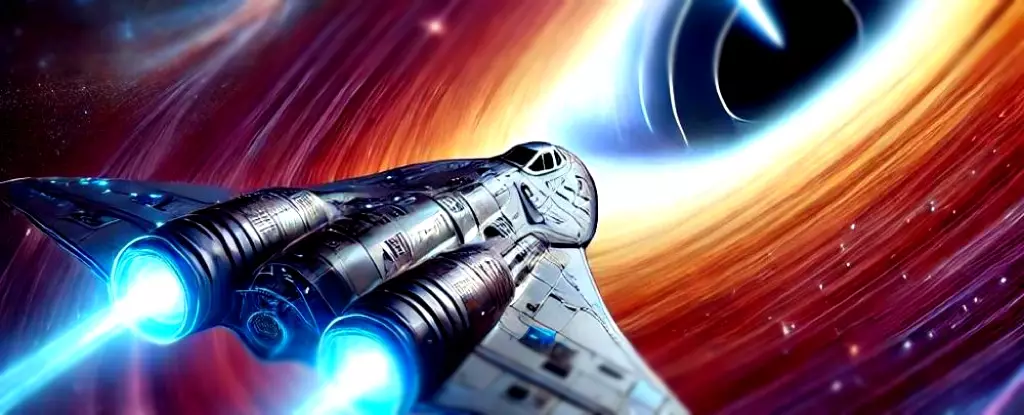In the realm of science fiction, warp drives have been a fascinating concept that has captured the imagination of many. Despite their non-existence in reality, researchers continue to explore the theoretical possibilities of such technologies. In a recent study, two researchers delved into the scenario of a ship with warp drive attempting to enter a black hole, resulting in thought-provoking conclusions that may have implications for future scientific endeavors.
The concept of warp drives stems from the need for faster-than-light (FTL) travel, which is essential for traversing vast distances in space within a reasonable timeframe. The idea is to create a warp bubble that allows a spaceship to move through space at FTL speeds. While this notion is commonly associated with science fiction, the theoretical basis for warp drives has intrigued physicists and researchers alike.
One of the primary challenges associated with warp drive technology is the immense amount of energy required to generate a warp field. The creation of such a field necessitates exotic matter, which poses a significant obstacle in terms of feasibility. Additionally, the concept of warp drives contradicts our current understanding of spacetime physics, raising doubts about their practicality.
In the study conducted by Remo Garattini and Kirill Zatrimaylov, the focus was on the interaction between warp drives and black holes, particularly Schwarzschild black holes. By combining equations related to black holes and warp drives, the researchers discovered the potential for embedding a warp drive within the outer region of a black hole. This interaction could lead to a decrease in the negative energy required to sustain the warp bubble.
The findings of the research team suggest that under certain conditions, the presence of a warp bubble near a black hole could have unforeseen consequences, such as the conversion of virtual particles into real ones. Moreover, the possibility of creating mini warp drives in laboratory settings based on this research opens up new avenues for exploration in theoretical physics.
While the study provides valuable insights into the potential relationship between warp drives and black holes, many questions still remain unanswered. The theoretical nature of warp drives and the complexities of black hole dynamics highlight the need for further research to fully understand the implications of such technologies. As scientists delve deeper into the realm of quantum mechanics and theoretical physics, the possibility of realizing warp technology may become more tangible in the future.
The theoretical possibilities of warp drives and black holes offer a fascinating glimpse into the potential for groundbreaking scientific discoveries. While the concept of warp drives remains firmly rooted in the realm of science fiction, ongoing research and experimentation may one day bring these technologies closer to reality. As we continue to unravel the mysteries of the cosmos, the intersection of warp drives and black holes presents a captivating area of study that holds promising prospects for the future of space exploration.


Leave a Reply